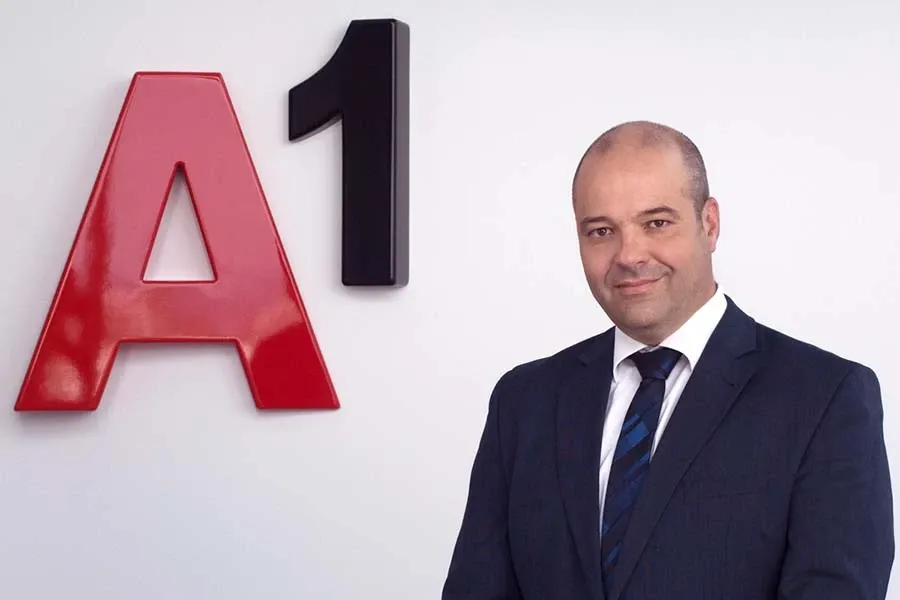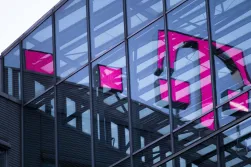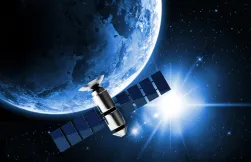A1 Hrvatska meets the requirements defined in the 2025 Digital Agenda, according to which, among other things, all the EU citizens should have a guaranteed minimum internet speed of 100 Mbit/s, according to Tomislav Makar, CTO at A1 Hrvatska.
He stated that developing 5G in Croatia will require investments of more than half a billion euros and, in that sense, it is necessary to lift the burden of frequency fees so that the funds are invested in infrastructure rather than in fees. Both the state and the local communities need to ensure an affirmative regulatory framework so enough base stations are built, seeing as their density needs to increase significantly for the 5G implementation to work.
How much of the fiber infrastructure for business and private customers does A1 Hrvatska have and what are your development-related plans for next year?
It is the fiber infrastructure that serves as the foundation for the digitalization of Croatia and the enabling of the fourth industrial revolution. Annually, A1 Hrvatska covers around 50,000 households with gigabit networks. This year, we exceeded the number of 500,000 households on gigabit technology, and our plan is to end the year 2021 with 700,000 such households, objective circumstances permitting. It is an ultrafast internet with, currently commercially available, speeds of up to 500 Mbit/s. We also plan to expand our network to new cities but also in cities where we already have our own fiber infrastructure. We are talking about 52 cities and towns where superfast internet is already available. Our system presently includes over 10,000 kilometers of city and intercity fiber network. Already, the technological solutions offered by A1 Hrvatska meet the requirements defined in the 2025 Digital Agenda, according to which, among other things, all the EU citizens should have a guaranteed minimum internet speed of 100 Mbit/s. I believe our ambition should aim even higher than that. Several days ago, we demonstrated the colored GPON technology, which will enable speeds of several Gbits per household. In the coming years, we will continue to expand our fiber network and build the 5G network. Our investment plans have been recognized by the European Commission in its latest Digital Economy and Society Index Report, which states that we are the key driver behind the development of ultrafast fixed broadband thanks to the accelerated introduction of the fiber network.
Why do customers expect fiber infrastructure? What is the situation with consumption and which type of services are used?
Today’s customers’ needs cannot be met without the latest infrastructure such as fiber or new-generation mobile networks. As a company, we offer all the convergent and ICT aspects of operating on a fiber connection, such as mobile, fixed, TV and data solutions, as well as cloud solutions and OTT services. We need to provide our customers with an uncompromising experience. There is a growing demand for high access speeds and low latency, especially for a top-quality experience of video content on OTT platforms, multimedia in general, and gaming. Along with speeds, we must also not forget the stability of the connection, which is multiple times better on fiber and hybrid technologies. As for business customers, fiber is already a standard for those who want a fast and stable connection without any limitations or compromises. We continue to further expand such infrastructure.
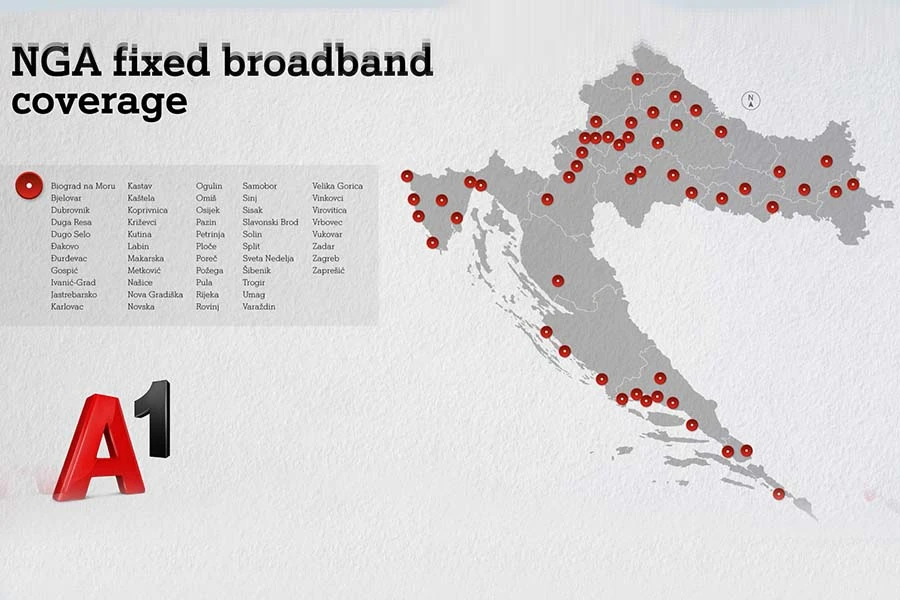
Fiber infrastructure will also serve as the foundation for the 5G networks. What are A1 plans for building the 5G network?
Back in the early 1990s, when the internet had first arrived in Croatia, the total internet traffic around the world was 100 GB a day. Nowadays, A1 network in Croatia alone records that in just 15 seconds. If we compare data traffic volumes from ten years ago and today, we will see that in 2008, the traffic for the entire summer for all our customers amounted to 80,000 GB, and nowadays, it is how much A1 roaming users make in a single day. We are ready to be among the first in Europe to introduce the 5G technology. Preparing both the infrastructure and the equipment, as well as the entire network architecture, which needs to be adapted to achieve high speeds and low latencies, is already underway. Last summer, we successfully demonstrated the 5G technology, achieving speeds of over 20 Gbit/s in a live 5G network. Moreover, on the island of Rab, we demonstrated the 5G network possibilities that enable the islanders and those living in isolated parts of the country to use all the advantages of the modern technologies. Recently, we even got a recognition from the European Commission for that very project. Our experts are working intensively on the latest radio access technologies, which we are testing in several places. As of recently, we are also testing the millimeter wave frequencies, which are specific for the 5G technology. In the future, the demonstrated speeds and the capacities of the 5G technology will enable gigabit speeds across Croatia, which are the main preconditions for digitalization, steady development and global competitiveness.
How can you meet the EU requirements when it comes to fast internet access for all the citizens of Croatia?
Our experts possess the knowledge and the competences to manage the latest technological solutions that can quickly bring broadband internet to every single household by 2021. That is our vision and we are working on it daily. We believe we need to precede Europe in broadband initiatives so as to be more competitive on the EU market in the future. The fact is that 700,000 households in rural areas lack good-quality internet access because they are using traditional, outdated technologies such as telephone pairs. Furthermore, we have 5,000 kilometers of coastline and over 1,000 islands. There are around a million and a half households in Croatia; with the current dynamics, it will take a really long time for the fiber to reach each and every household - and that is not even taking into account the quite high cost of doing it in rural areas. If all the necessary preconditions are created and 5G is implemented in a smart way, it can be a good solution for the rural areas and for the fast development of the households’ broadband connectedness, as well as for catching up with the rest of Europe. The EUR 120 million, currently available through the EU funds, can be enough to bring new-generation networks to between 150,000 and 200,000 households. Here in Croatia, there are around a million households and it will take a double-digit number of years to cover them all with fiber, and that is not taking into account the fact that the cost of doing that in rural areas is extremely high. That is why the solution is to go with radio technology such as 5G, and one of the preconditions is to grant a frequency spectrum in such a way that it encourages investments, development and digitalization of the society. Developing 5G in Croatia will require investments of more than half a billion euros and, in that sense, it is necessary to lift the burden of frequency fees, so that the funds are invested in infrastructure rather than in fees. Both the state and the local communities need to ensure an affirmative regulatory framework so enough base stations are built, seeing as their density needs to increase significantly for the 5G implementation to work. Furthermore, to successfully build a 5G network, there needs to be a good-quality intercity distribution and transport network, which is why fiber and 5G go hand in hand. These investments need to start immediately if we want to have a timely developed 5G network. In that segment, we also expect to get EU funds; they need to be utilized as soon as possible and the implementation of the National Program for the Development of Broadband Backhaul Infrastructure in Areas Lacking Sufficient Commercial Interest for Investments (NPBBI) has to be launched promptly.
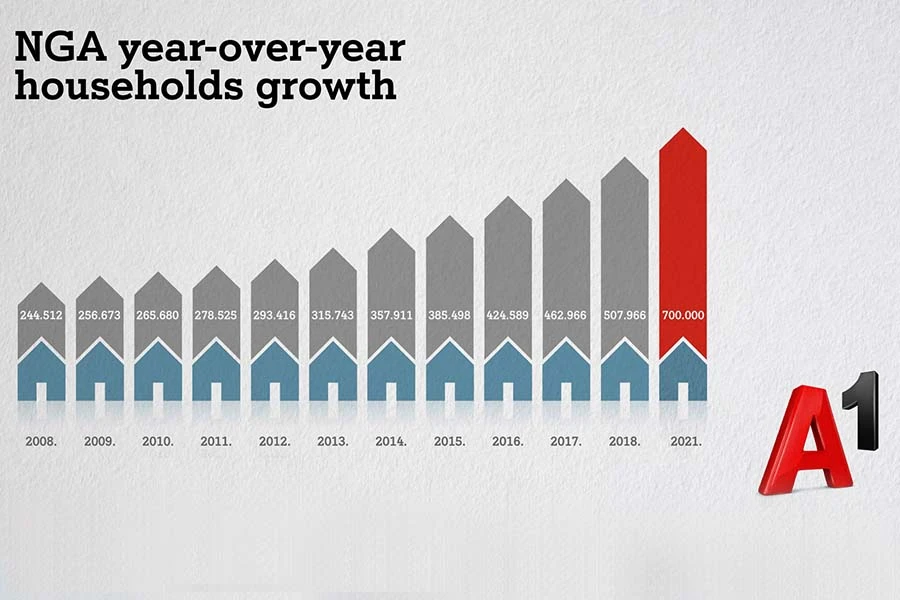
What direction is the development of IoT solutions and the application of AI in a modern telecom company going to take? What are the global trends like? What is it like here locally?
Fiber and 5G are crucial for both digitalization and competitiveness in Europe, and will play a decisive role in the development of industry 4.0, logistics and mobility, and some would say the gigabit society. Just as the steam engine and the application of various forms of energy were crucial in previous industrial revolutions, so will the modern telecommunications infrastructure serve as the groundwork for the industrial revolution that we are currently experiencing. The application of new technological solutions will dramatically change our lives. Among other things, it will allow for the development of smart cities, autonomous vehicles, and real-time application of virtual technology in medicine, business and entertainment, as well as advanced educational methods. Today's economy is global because you can buy or digitally produce something from any location. Without the 5G technology, it will be impossible to be globally competitive. The number of smart households in Croatia is growing exponentially. In each one of them, there are several smart devices connected to the network. And their number will keep going up as well. Simply put, any device that can benefit in any way from being connected will be connected, seeing as that will enable advanced analytics, more efficient business operations and greater security. In Croatia’s case, that can mean 150 million connected devices at one point. Such volumes are possible only through using the new IoT technologies. A1 Hrvatska already has all the IoT functionalities in our mobile networks, as well as platforms enabling efficient management of such a number of devices by the end user. As for AI, we have recognized the importance and the advantages of applying it to improve everyday business operations. We believe the development of cognitive technologies and AI is one of the most propulsive technological sectors at the moment. Over a year ago, we adapted our organization and started building AI-related competences, i.e. machine learning, neural networks, speech processing and automation. We are working intensively on using AI to optimize processes within the company, something that we at A1 Hrvatska find to be an important part of our digital transformation. We also use AI in the predictive modelling for our network, in predicting and eliminating potential troubles before our customers notice them, with the goal of providing an even better customer experience. We also use it in optimizing our network: we use advanced algorithms to automate a large number of operations in order to provide our customers with the best quality at any given moment. As for IT security, we are increasingly relying on the assistance and support from various modern systems using AI to perform their tasks. We want the latest and most advanced technology to be one of the foundations we build our quality, customer experience and customer satisfaction on. I am confident AI will play an important role in that particular process.

